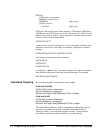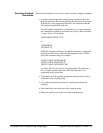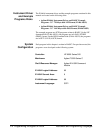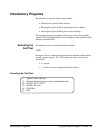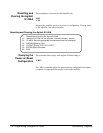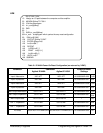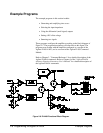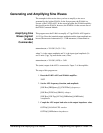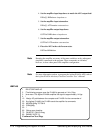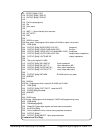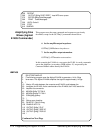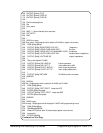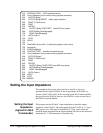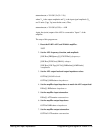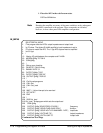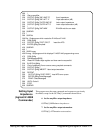
4. Set the amplifier input impedance to match the AFG output load.
INPut[1]:IMPedance <impedance>
5. Set the amplifier input attenuation.
INPut[1]:ATTenuation <attenuation>
6. Set the amplifier output impedance.
OUTPut2:IMPedance <impedance>
7. Set the amplifier output attenuation.
OUTPut2:ATTenuation <attenuation>
8. Place the AFG in the wait-for-arm state.
INITiate:IMMediate
Note Resetting the amplifier sets many of the same conditions set by subsequent
(amplifier) commands in the program. These commands are included,
however, to show other parts of the amplifier configuration.
Note For more information on how to program the Agilent E1445A AFG, refer to
the Agilent E1445A Arbritrary Function Generator User’s Manual.
AMPL45
1 !RE-STORE"AMPL45"
2 !The following program uses the E1445A to generate a 1 kHz, 2Vpp
3 !sine wave. The Agilent E1446A amplifies the signal to approximately 14 Vpp.
4 !
10 !Assign I/O path between the computer and E1445A. As the commander of
20 !the Agilent E1446A, the E1445A sends the amplifier its commands.
30 ASSIGN @Afg TO 70910
40 COM @Afg
50 !
60 !Set up error checking
70 ON INTR 7 CALL Errmsg
80 ENABLE INTR 7;2
Continued on Next Page
2-10 Programming the Agilent E1446A Generating and Amplifying Sine Waves



